Cryptocurrencies whose value is tied to a physical or digital asset are called stablecoins. The most popular ones are pegged to the U.S. dollar at a 1-to-1 ratio. The stable price of these coins allows you to earn passive income, eliminating the risk of volatility.
Types of Stablecoins

Stablecoins can be roughly divided into three main types:
- Stablecoins backed by a physical asset. The value of such assets is tied to fiat currency or other physical assets (gold, silver, or oil). Projects in this category are funded by appropriate reserves.
- Algorithmic stablecoins. Such assets are backed by native tokens of the projects themselves and are regulated by algorithms that automatically burn off surpluses or issue additional tokens to maintain a stable exchange rate. After the UST collapse, some algorithmic stablecoins began to be additionally backed by other crypto-assets, such as USDD.
- Stablecoins backed by other cryptocurrencies. Such assets are secured by reserves in highly liquid cryptocurrencies such as BTC or ETH. The only major project of this kind is Dai (DAI). In purely technical terms, it’s also an algorithmic stablecoin, just fully backed by ETH.
Opportunities for Passive Income on Stablecoins

Stablecoins are most often used to hedge the risk of high volatility, but there are several options in the market for making passive income on stablecoins:
- staking;
- farming;
- lending.
Yield farming involves high interest rates, but also high risks. Since stablecoins are often only half the rate in yield farming, staking profitability will only be half as stable. Moreover, the mechanisms of yield farming are quite complex and require the constant monitoring of coins. The same is valid for lending, that is, lending money to other users using DeFi protocols.
Stablecoin staking is possible via cryptocurrency exchanges and DeFi projects. Staking terms can be floating or fixed. A fixed rate brings the investor more profit, but funds are locked for a long period of time, and early withdrawal leads to a complete loss of profit. Given the specifics of the crypto market, this is risky, but in the case of stablecoins, it’s less significant when compared to more volatile assets.
Popular Stablecoins for Staking

One of the most widely used stablecoins for staking up until May 6, 2022, was the algorithmic stablecoin Terra USD (UST). However, the asset is no longer profitable for investors after the FUD attack on the project, the destabilization of the UST’s exchange rate, and its delisting on most cryptocurrency exchanges. Meanwhile, at the time of writing, according to the Staking Rewards service, UST worth over $20 million is still locked in the Anchor protocol. This circumstance clearly demonstrates the risks associated with the fixed staking of stablecoins.
Let’s take a look at the yields of the most popular stablecoins.
Tether (USDT)
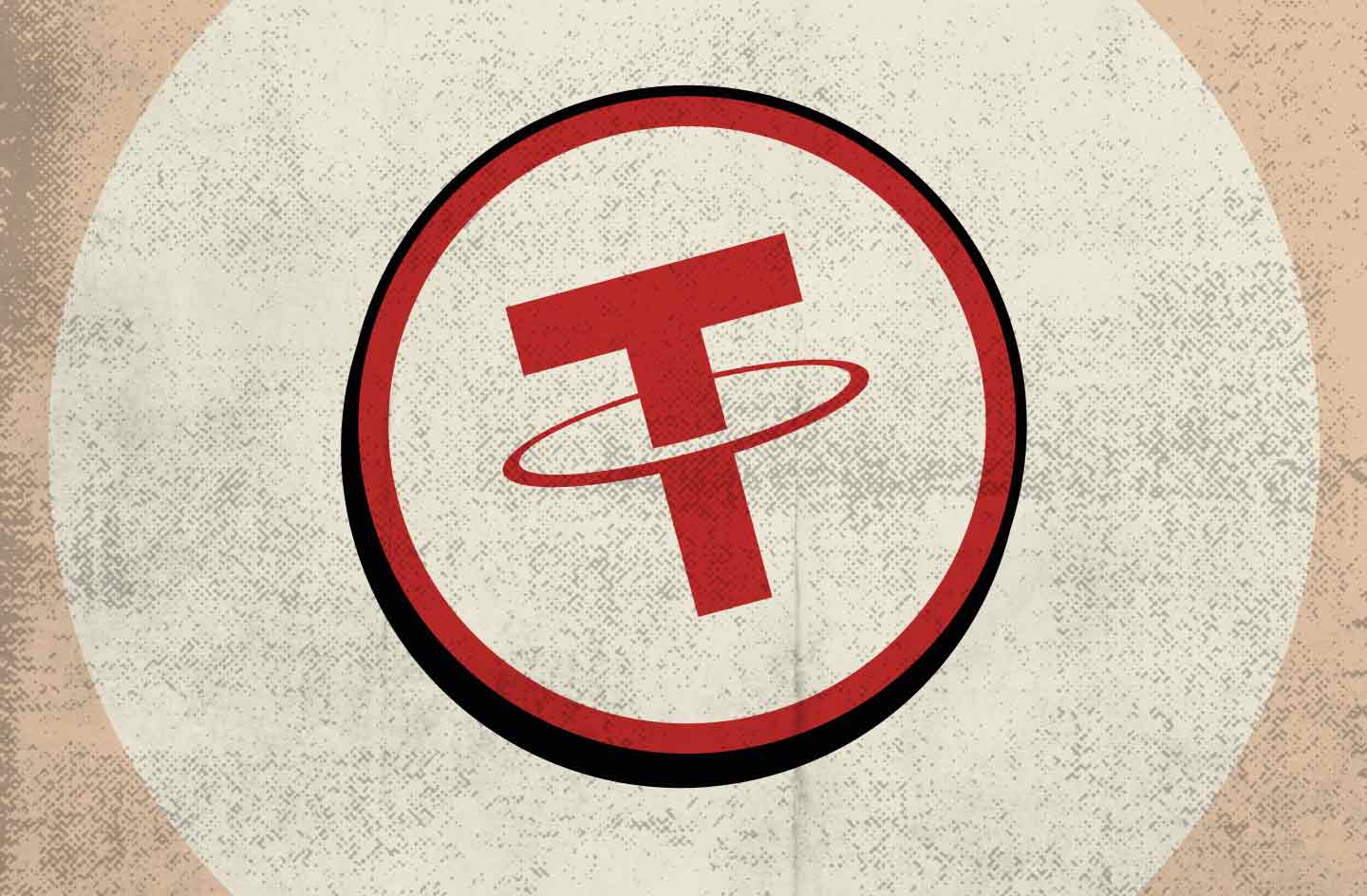
The stablecoin is backed by the U.S. dollar, euro, Japanese yen, and securities. Tether is the third most capitalized cryptocurrency in the world after BTC and ETH. The coin is issued by the Tether Limited corporation under the Bitfinex exchange. The company’s representatives claim that the stablecoin is backed by assets that exceed the USDT’s value in circulation.
Project capitalization: $65.9 billion (hereinafter according to the CoinMarketCap service, as of July 27, 2022)
Number of coins staked: $1.6 billion (hereinafter according to Staking Rewards)
Average annual staking yield: 6.42%
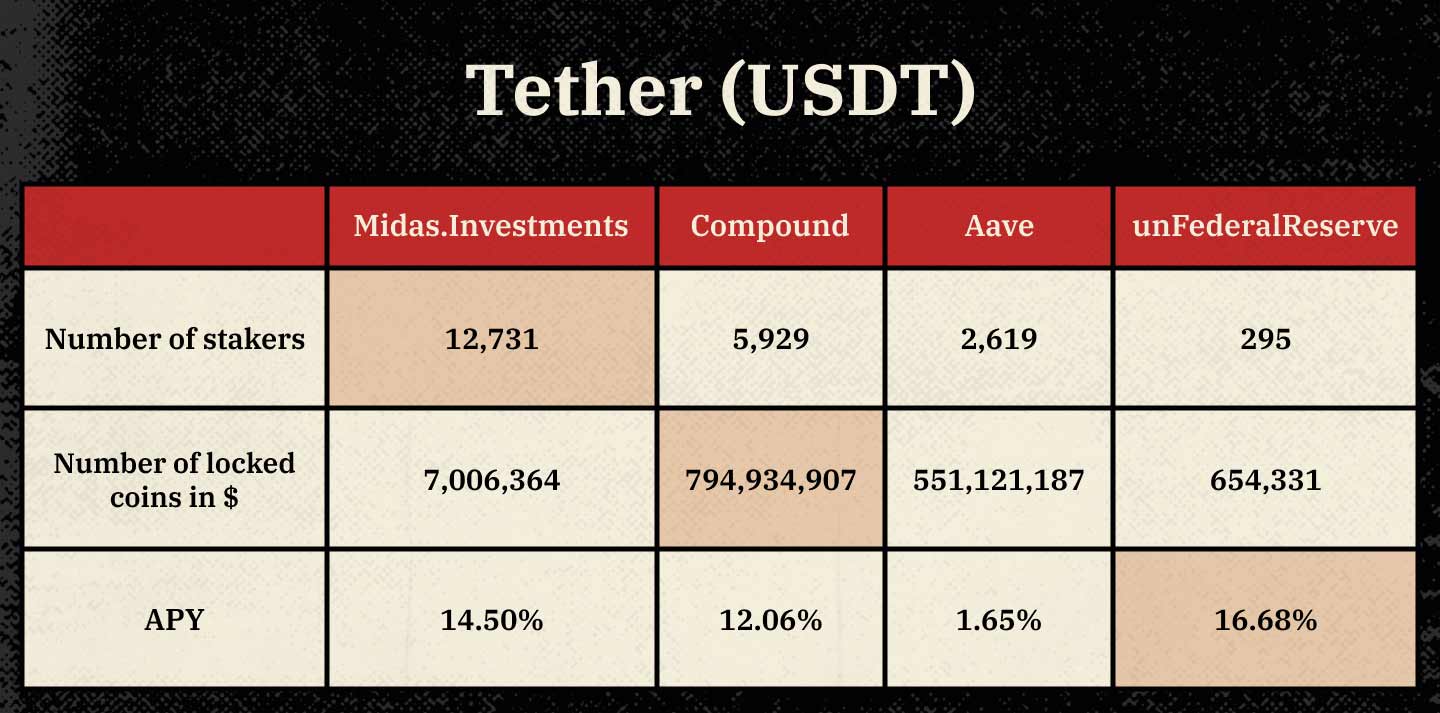
The most popular staking platform for USDT is the non-custodial protocol Midas.Investments. The platform has over 12,700 Tether stakers, and the total amount of locked USDT is $7 million. The annual return on the coin is 14.5%.
The most profitable platform for USDT staking is the SaaS site, unFederalReserve, with an APY of 16.68% for Tether. At the same time, the platform has only 295 stakers, and the total amount of locked USDT is $654,000.
The leader in terms of locked USDT is the DeFi project, Compound, where nearly 6,000 stakers deposit more than $794 million worth of coins. The return on Tether via Compound is 12.06% per year.
Another major platform for USDT staking is Aave, where 2,600 stakers have deposited ~$550 million worth of Tether coins. Notably, the annual interest rate of USDT on Aave is only 1.65%.
USDT staking is also available on some major cryptocurrency exchanges:
- OKX — APY 2.13%;
- Binance — APY 3.12%;
- KuCoin — APY floating from 12% to 1.5%;
- Gate.io — APY 4%;
- Crypto.com — APY 6.5%;
- Bybit — APY 2.3%.
USDT is issued on different blockchains, so various token standards are available in circulation: OMNI, ERC-20, TRC-20, BEP-2, and BEP-20. They have the same value but aren’t fungible, therefore, it’s important to pay attention to the token standard when choosing the platform for staking.
USD Coin (USDC)

The stablecoin is backed by the U.S. dollar. It is the fourth most capitalized cryptocurrency in the world. The coin is issued by the Centre Consortium and was founded by Circle in collaboration with Coinbase. USDC is an ERC-20 token based on the Ethereum blockchain.
Project capitalization: $55.1 billion
Number of coins staked: $5.6 billion
Average annual staking yield: 6.02%
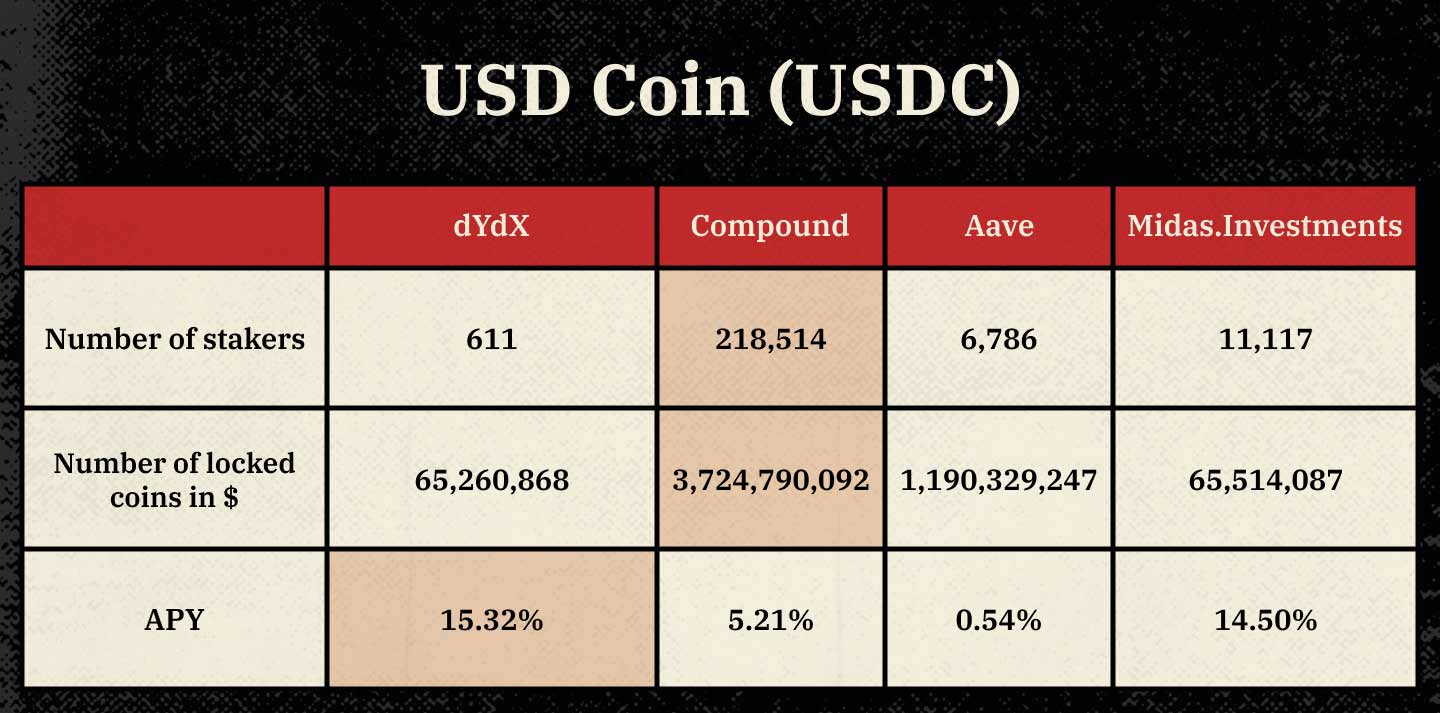
The DeFi project, Compound, is the most popular platform for USDC staking, with over 218,500 stakers having locked more than $3.7 million worth of coins, while the APY of USDC on Compound is only 5.21%.
The highest annual return on USDC staking is 15.32% on dYdX. The number of USDC stakers on dYdX is only 611, and the total amount of assets staked is ~$65 million.
Therefore, one staker on average locks ~$106,800 USDC on dYdX, while the same indicator on Compound is only ~$17,000. This metric is even higher on another popular platform for USDC staking — Aave, where one staker locks ~$175,000 USDC. It is worth noting that the APY of USDC via Aave is only 0.54%.
The return on USDC staking on the SaaS platform, MyCointainer, is comparatively high at 10% per annum, but the staker’s average rate on the platform is only ~$80. USDC on another SaaS platform, unFederalReserve, also has a high APY of 13.44%, and the average staking rate via the platform is ~$5,600.
You can also stake USDC through the following crypto exchanges:
- OKX — APY floating from 0.86% to 4%;
- Binance — APY 2.79%;
- KuCoin — APY floating from 3% to 1.5%;
- Gemini — APY 5.31%;
- Crypto.com — APY 6.5%;
- Bybit — APY 5.5%.
Dai (DAI)
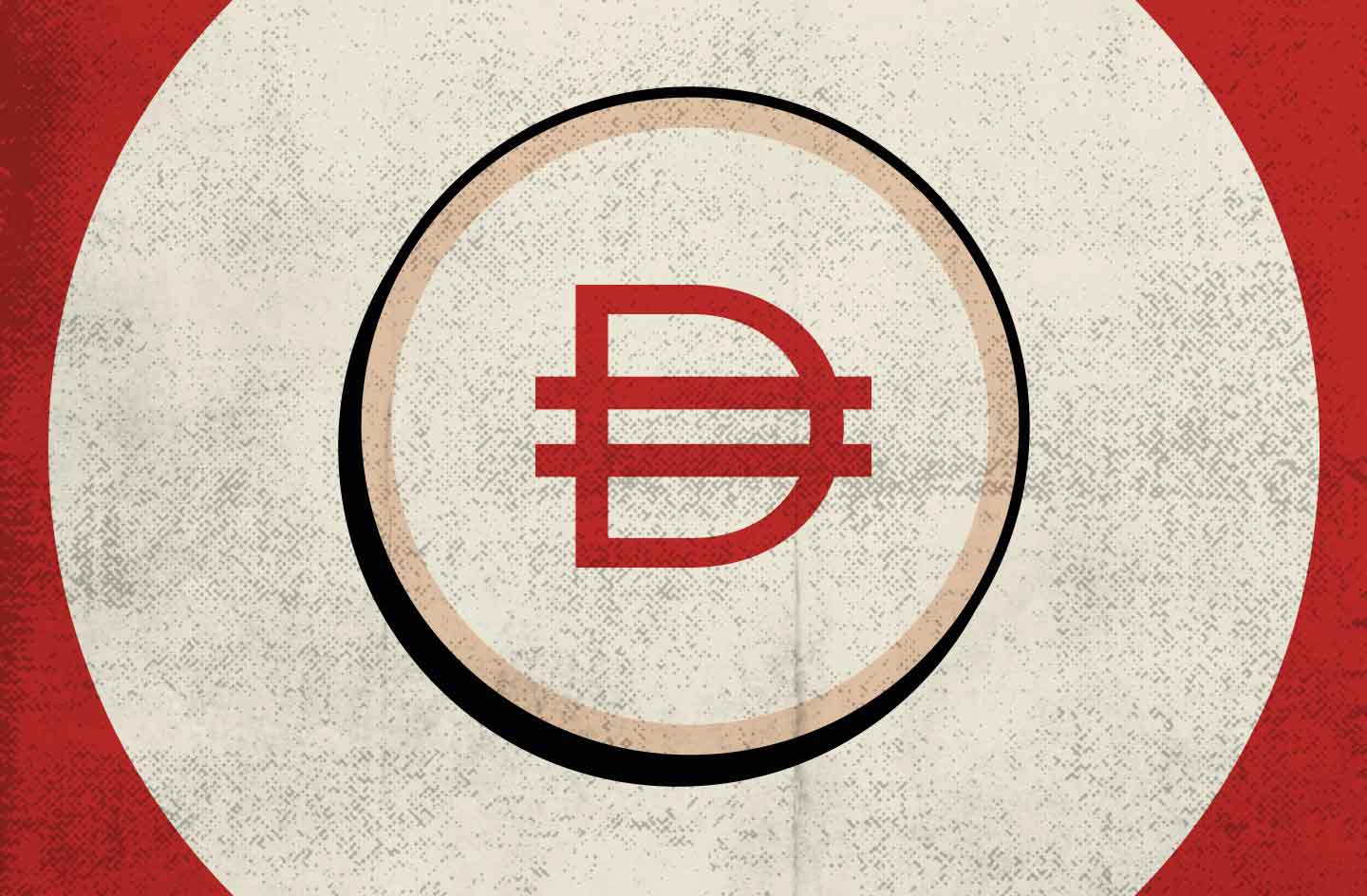
An ERC-20 stablecoin, backed by ETH at a 1-to-25 ratio. The coin is issued by the MakerDAO crypto lending system. Coin issuance is automatically managed by smart contracts, keeping DAI’s value at $1.
Project capitalization: $6.9 billion
Number of coins staked: $4.5 billion
Average annual staking yield: 4.78%

The highest DAI staking yield is offered by the Midas.Investments platform at 14.5% per annum. DAI staking through Yearn.Finance is also profitable, with an annual return of 13%. Stakers lock an average of $1,000 each via both platforms.
The most popular platform for DAI staking is Compound, where more than 19,000 stakers have locked DAI worth ~$3.8 billion. One platform user on average stakes ~$200,000 worth of assets, although the yield on DAI staking on Compound is only 3.26% annually.
Another popular DAI staking platform is Aave, through which one staker locks ~$76,700 worth of coins. Despite the high popularity of the platform, the DAI staking return is 0.59% per annum.
The popular SaaS platform, MyCointainer, supports DAI staking with an APY of 10%. The average staking rate through the platform is about $460, with a total of ~$35,500 worth of coins locked on MyCointainer.
These major crypto exchanges also allow DAI staking:
- Binance — APY 3.78%;
- Coinbase — APY 0.15%;
- Gemini — APY 5.31%;
- Crypto.com — APY 6.5%.
TrueUSD (TUSD)
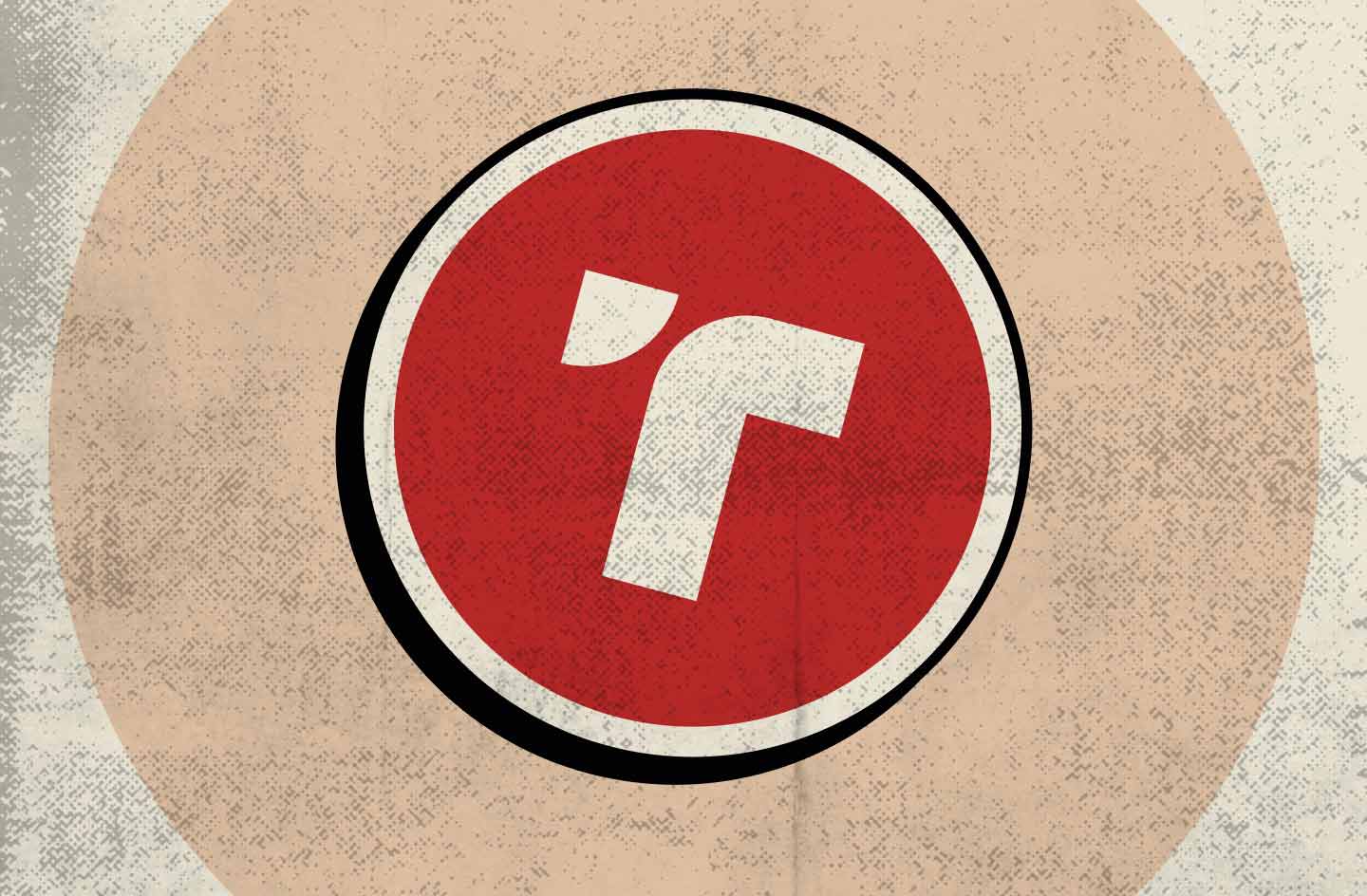
The stablecoin is backed by the U.S. dollar. TrustToken is the issuer of the coin, holding the necessary amount of funds in trust accounts of partners to provide TUSD. The token standard is ERC-20.
Project capitalization: $1.2 billion
Number of coins staked: $276.7 million
Average annual staking yield: 6.07%
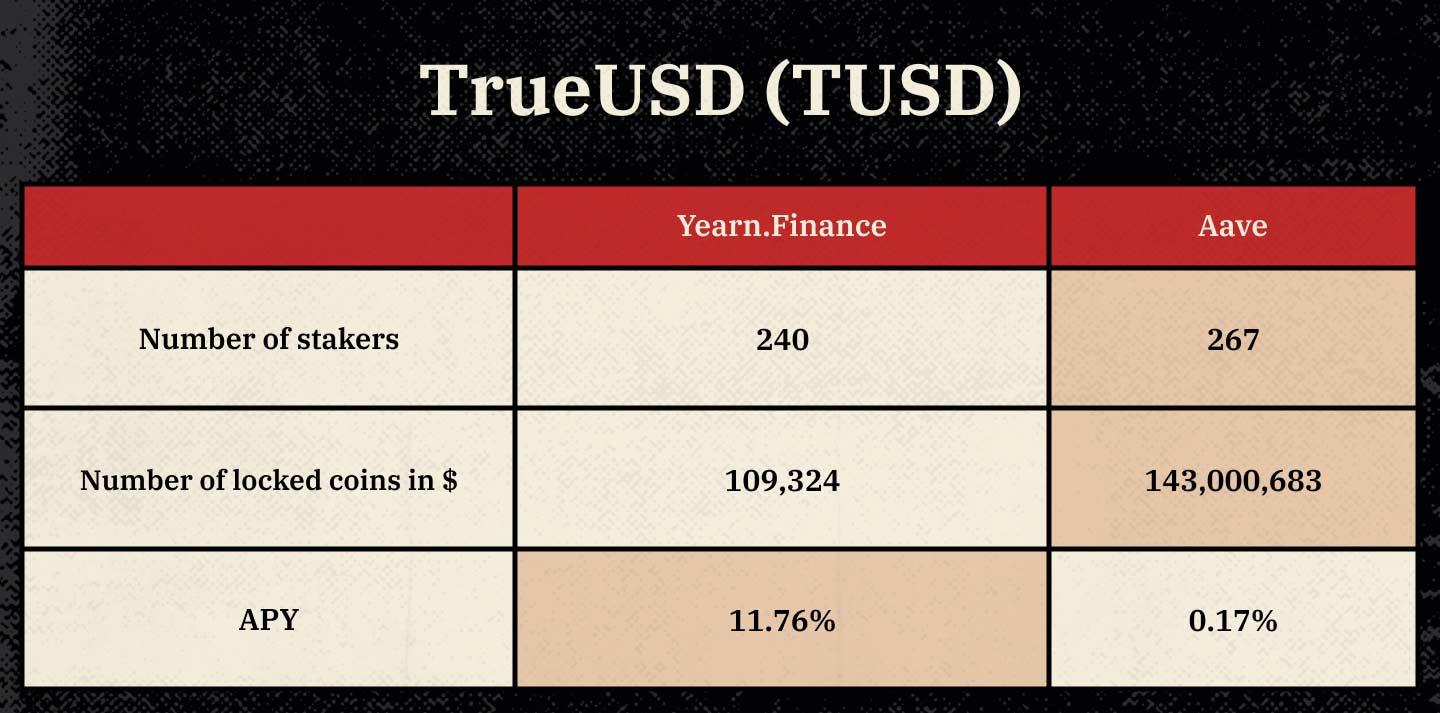
The most profitable platform for TUSD staking is Yearn.Finance, with an APY of 11.76%. However, Yearn.Finance validator nodes aren’t very popular among TUSD stakers, delegating on average coins worth ~$455.
Notably, TUSD staking, in general, doesn’t seem to be widely popular. As a result, only about 260 stakers are active through Aave, which has locked more than $143 million of TUSD coins. But despite the 0.17% APY, on average each staker locks more than $535,500 worth of coins through the platform.
TUSD staking is available on cryptocurrency exchanges OKX with APYs ranging from 4% to 6.14% and Crypto.com with a 3% APY.
Binance USD (BUSD)

The stablecoin of the Binance cryptocurrency ecosystem. The coin is issued by the blockchain infrastructure platform Paxos. The currency reserve to back BUSD is held in U.S. banks and secured by the Treasury and the Federal Deposit Insurance Corporation (FDIC). ERC-20, BEP-20, and BEP-2 tokens are available.
Project capitalization: $17.8 billion
Number of coins staked: $37.8 million
Average annual staking yield: 5.85%
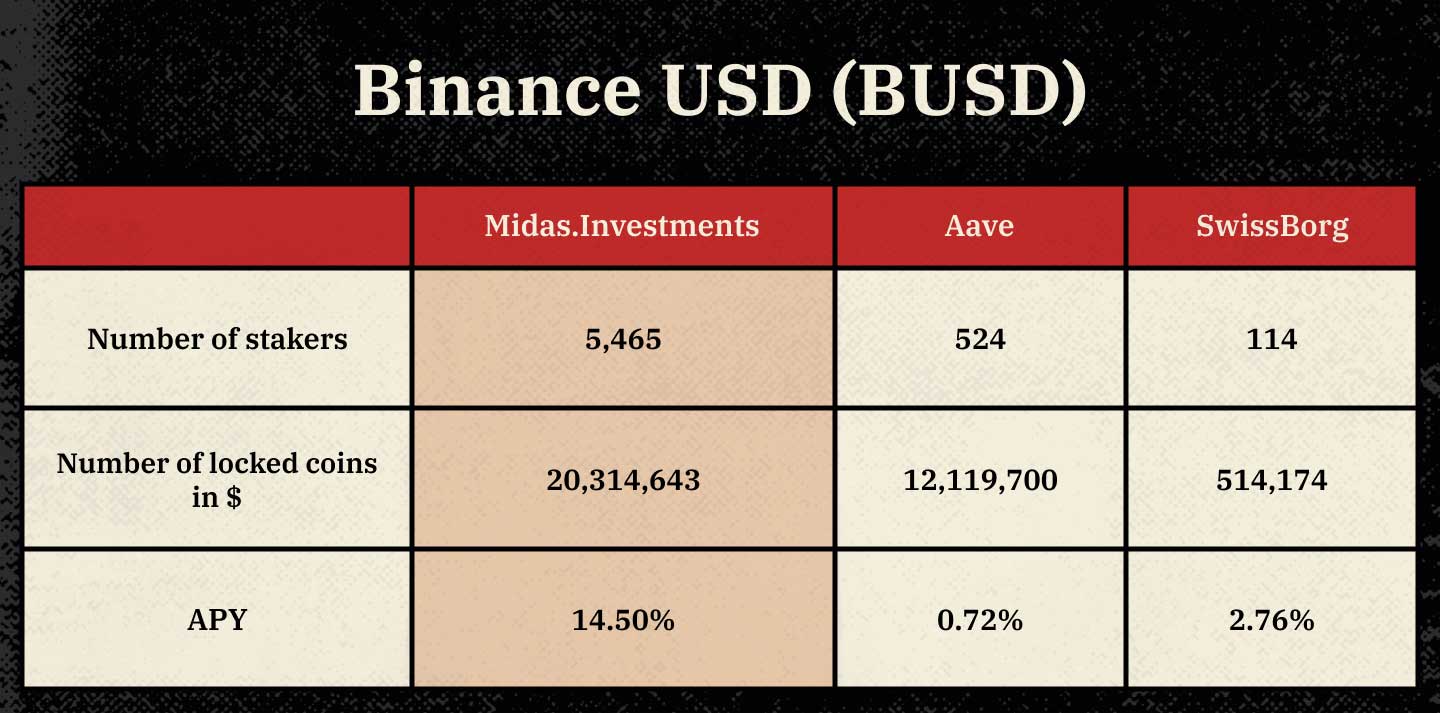
The leader in BUSD staking is Midas.Investments whose users have delegated ~$20 million of coins to validators. The annual return on staking is 14.5%. On average one staker locks over $3,700 worth of BUSD. More than 5,000 Binance USD holders are connected to the nodes of Midas.Investments validators.
Users delegate relatively large amounts of BUSD through the nodes of Aave validators, where the staking yield is only 0.72% per annum. On average, one staker here locks more than $23,000 worth of BUSD.
BUSD staking among cryptocurrency exchanges is available only on Binance with APY from 3.21% to 13.33%, depending on the term of depositing funds.
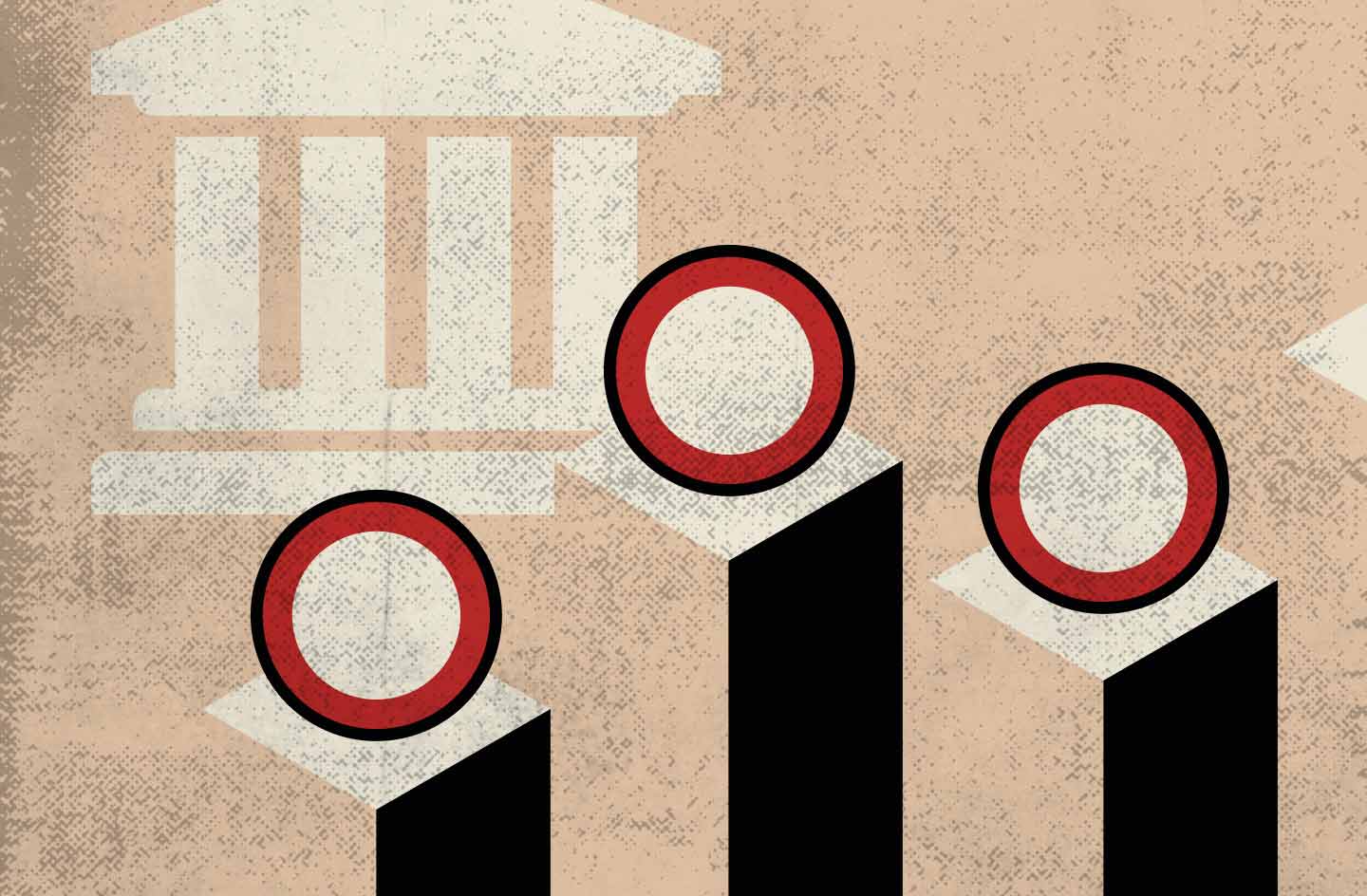
To summarize: DeFi platforms and cryptocurrency exchanges are the most popular platforms for staking stablecoins. The former is more trustworthy, even despite the lower staking returns. High APYs attract only newcomers, while skilled stakers prefer to delegate their assets to proven projects, sacrificing high profitability in favor of reliability.





